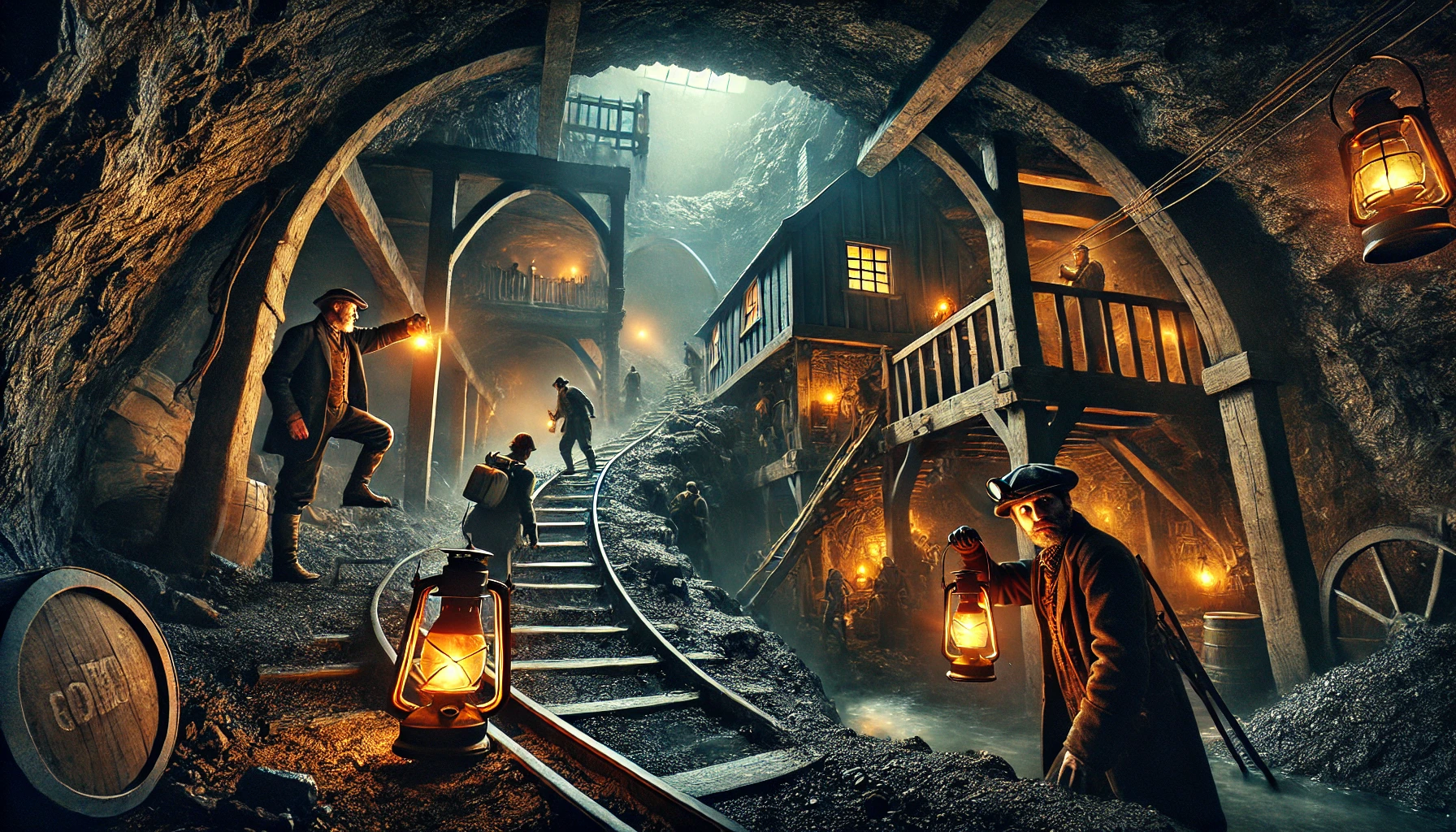“In the Year 2889” is a short science fiction story written by Jules Verne and first published in 1889. The story is set in the distant future, exploring a single day in the life of Fritz Napoleon Smith, the editor of the powerful “Earth Chronicle” newspaper. Verne, a pioneer of the science fiction genre, envisions technological and social developments that appear astonishingly prophetic. The narrative revolves around the innovations and societal changes that shape this futuristic world, focusing on communication, transportation, and the industrialization of human life.
Plot Summary
On the morning of September 25th, 2889, Fritz Napoleon Smith, the wealthiest and most influential man in the world, wakes in a foul mood. His wife, Edith, has been in Paris for eight days—an unusually long absence—and for the first time since their marriage, he feels the emptiness of his grand mansion in Centropolis. After shaking off his melancholy, Smith summons his telephote, a marvel of the age that allows images to be transmitted across great distances. Through the telephote, he connects with his wife, watching her peacefully sleep in their Parisian residence, even catching her murmuring his name in her dreams. This brief vision lifts his spirits, and he promptly rises to begin his busy day.
Smith is not an ordinary man. As the editor-in-chief of the “Earth Chronicle,” the world’s most powerful newspaper, he commands the attention of billions. His media empire spans the globe, influencing not only public opinion but also global politics and science. The Earth Chronicle has grown immensely under his leadership, reaching 80 million subscribers and generating an immense fortune of $10 billion. This newspaper, however, is unlike the printed papers of old. Smith has revolutionized the industry with telephonic journalism, where news is spoken to subscribers directly, delivered to phonographs in their homes. In this future, the written word has given way to the spoken one, and subscribers engage in direct dialogue with reporters and statesmen.
After his conversation with Edith, Smith is swiftly dressed by a mechanical valet and delivered to his office. His first task is to check on the novelists employed by the Chronicle. One writer earns his praise for an insightful portrayal of rural life, while another is rebuked for failing to analyze the complex motivations of his characters. Smith advises him to study the intricacies of the human mind, using the latest advancements in hypnotism, which allow writers to observe the subconscious thoughts that drive human actions. After his session with the authors, Smith moves on to the reporters’ hall, where 1,500 journalists are delivering the news from around the world. The reporters use advanced telephonic and photonic technology to transmit not just their voices but also live images of events as they happen. Smith asks about the latest news from Mars, where a revolution has broken out in the Central Empire, and checks in on communications with other planets. While Mars is fully connected, Jupiter remains elusive, and the moon is revealed to be uninhabited, much to Smith’s disappointment.
From there, Smith inspects the scientific division of his vast empire. The room is filled with mathematicians and scientists engaged in cutting-edge research, from astronomy to optics. Smith berates one of his scientists, Cooley, for failing to establish communication with Jupiter, though Cooley insists the problem lies in the limitations of current telescopes. Despite this setback, there is exciting news about Olympus, a new planet beyond Neptune, whose orbit has finally been calculated. Pleased with this discovery, Smith orders the news to be broadcast immediately.
Smith’s next stop is the atmospheric advertising department, a spectacle unique to this futuristic world. Enormous projectors beam advertisements onto the clouds, visible to entire cities. Unfortunately, the sky today is clear and cloudless, rendering the projectors useless. Frustrated, Smith directs his meteorological team to work on creating artificial clouds, so they are no longer at the mercy of weather conditions.
The day grows busier as Smith moves to his reception chamber, where diplomats from across the world await his counsel. Ambassadors from France, Russia, and Britain engage in political discussions that Smith moderates. The French ambassador insists that the status quo in Europe must be maintained, while the Russian urges expansion into the West to counter Chinese threats from the East. Smith promises to bring the Chinese issue to the attention of the American Secretary of State, deftly managing the diplomatic tensions. Sir John, the British ambassador, pleads for the annulment of the Act of Congress that annexed the British Isles to the United States 150 years ago, but Smith dismisses his request with humor, noting that Britain has become just another American colony.
As noon strikes, Smith retires to his chamber for breakfast, a solitary affair despite the telephotic presence of his wife in Paris. They share a brief, awkward meal across the distance, with Mrs. Smith apologizing for her tardiness due to an appointment with her dressmaker. Smith finishes his meal alone, hurried by the demands of his schedule.
In the afternoon, Smith visits his energy works at Niagara Falls. He has leased the falls and, using the transformative technology of accumulators, harnesses the power of the water to fuel entire cities. His system stores the natural energy, converting it into light, heat, and electricity for the world. The visit takes longer than expected, and by the time he returns home, he is met with a long line of petitioners. Inventors, visionaries, and scientists present their ideas to him, seeking funding or validation. Among them is a young chemist who claims to have discovered a way to break down the last remaining irreducible elements, promising to create any material—wood, stone, or even human flesh—from basic components. Intrigued, Smith invests in his research. Another inventor proposes moving entire cities on rails, transforming inland towns into coastal resorts, while a third seeks to melt the polar ice caps to make new land habitable. Smith, always one for grand ideas, entertains each project with cautious interest.
As evening approaches, Smith prepares for a unique event—the resurrection of Dr. Nathaniel Faithburn, a scientist who put himself into a state of hibernation a century ago. Faithburn’s experiment in suspended animation is set to culminate in his revival on this very day, and a large scientific assembly gathers at Smith’s home for the occasion. Despite their efforts, the procedure fails, and Faithburn is declared dead—his century-long slumber having ended in permanent death. Smith, exhausted from the day, reflects on the failure of the experiment before turning his thoughts to his own fatigue. He orders a mechanical bath, which arrives through his automated system. As he sinks into the bath, the editor of the Earth Chronicle is left to contemplate another day in this tireless, mechanized world—where progress never ceases, and neither, it seems, does the exhaustion it brings.
Main Characters
Fritz Napoleon Smith: The protagonist and editor of the “Earth Chronicle,” Fritz is a visionary and workaholic media tycoon. He embodies the pinnacle of success in this technologically advanced world. Throughout the story, his day is filled with meetings, decisions about scientific advancements, and interactions with world leaders, showcasing his immense power and influence.
Mrs. Edith Smith: Fritz’s wife, Edith, is described as a “professional beauty” and represents the more personal side of Smith’s life. Although she is often absent from his day-to-day routine due to her travels, their interaction through futuristic technology highlights the changes in human relationships in this future society.
Dr. Wilkins: A doctor who attends to Fritz Napoleon Smith and participates in the bizarre experiment of reviving a person from suspended animation. He represents the scientific elite of this futuristic society, always pushing the boundaries of medical knowledge and innovation.
Theme
Technological Progress: The story presents a world where technology has reached unimaginable heights. Telephonic journalism, accumulators that store and distribute energy, and aerial transportation are just a few examples of innovations that shape society. Verne’s depiction of this future technology highlights the promise and potential dangers of progress.
Power and Influence of Media: The media, embodied by the “Earth Chronicle,” has evolved into an all-powerful entity capable of influencing global politics, society, and even scientific developments. Smith’s control over information gives him extraordinary power, illustrating Verne’s foresight into the future role of mass media in shaping public opinion and policy.
Isolation and Modern Relationships: Despite technological advancements that allow for constant communication, there is a sense of isolation in the characters’ relationships. Fritz’s interactions with his wife, conducted via a telephotic device, underscore the growing distance that modern conveniences can create in personal connections.
The Burden of Progress: Though technology has solved many of the world’s problems, it has also imposed a great burden on individuals like Fritz, who struggles with the demands of his vast empire. The constant rush of innovations and the high-speed nature of life in 2889 evoke a sense of fatigue, suggesting that progress, while beneficial, may come at a personal cost.
Writing Style and Tone
Verne’s writing in “In the Year 2889” is characterized by its blend of speculative imagination and detailed scientific explanation. The tone is speculative and analytical, often conveying a sense of wonder at the futuristic advancements described. Verne’s language is descriptive, focusing on the marvels of technological achievement, but it also contains subtle critiques of the social and psychological impact of such progress.
The story adopts a forward-looking and somewhat detached tone, as it explores a day in the life of an individual at the helm of this new world order. Despite the excitement of the future, Verne’s tone also hints at a sense of irony—while society has advanced, personal happiness and fulfillment seem to lag behind. This interplay between enthusiasm for innovation and concern for its consequences is a hallmark of Verne’s style, reflecting his position as one of science fiction’s earliest and most thoughtful writers.
We hope this summary has sparked your interest and would appreciate you following Celsius 233 on social media:
There’s a treasure trove of other fascinating book summaries waiting for you. Check out our collection of stories that inspire, thrill, and provoke thought, just like this one by checking out the Book Shelf or the Library
Remember, while our summaries capture the essence, they can never replace the full experience of reading the book. If this summary intrigued you, consider diving into the complete story – buy the book and immerse yourself in the author’s original work.
If you want to request a book summary, click here.
When Saurabh is not working/watching football/reading books/traveling, you can reach him via Twitter/X, LinkedIn, or Threads
Restart reading!








